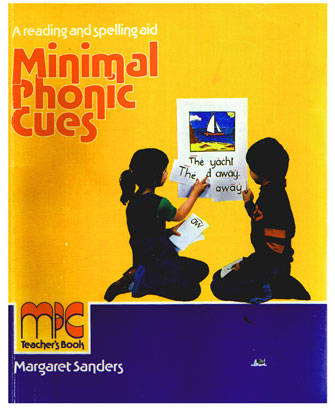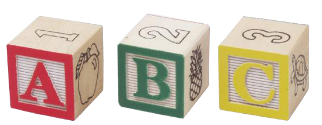MPC Teacher's Book
Preface
Below is the web version of the MPC Teacher's Book, an invaluable guide for anyone using the MPC system. It covers all the basic principles of the system, as well as giving helpful notes and advice about how to use MPC in particular circumstances, with students of varying ages and abilities. The Teacher's Book also explains fully how to make the best use of the Workbooks and Word List included in this scheme. Please navigate the book by using the dynamic contents located in the right pane. A pdf version of the book can be downloaded from the resources section or by following this link.

Introduction
Teachers are constantly looking for ways of helping their pupils, particularly to increase their independence and skill in aiding their own learning and in being able to read alone. A great deal of personal contact with the teacher is required before a child can read instructions and produce written answers. Should this be given by addressing the whole class and directing them all in the same piece of work? Should the children be grouped, with only one section at a time enjoying the teacher’s whole attention, or should this contact be as far a possible on an individual basis? Whatever means are used, a great deal more learning takes place when children can work on their own and are motivated to do so.
As a teacher of infants, I constantly exercised all my ingenuity to provide self-checking activities for the ‘other group’ while teaching something new to some of the children. As a teacher of mixed ability Junior classes and rural classes with a wide age-range, I was most worried by the slower children as it was difficult to keep them well occupied in useful learning while others received my main attention.
In training students to teach infants, I am frequently asked how to ‘give children words’ for writing without long queues forming or children wasting time. Another common problem is how to hear each child read frequently while dealing with all the other activities of the classroom. Bright children with good home support frequently work well on their own because they have early success and are encouraged by it. Lack of success puts children off and they lose interest in the task for its own sake.
English spelling is known to be a source of difficulty in learning to read. For a start, there are about forty-four main sounds in the language, but only twenty-six letters in the alphabet. Berkiansky (1969) worked with a group studying phonics. They identified sixty-nine letters representing single sounds and seventy-nine different ways of spelling the six vowels ‘a’, ‘e’, ‘i’, ‘o’, ‘u’ and ‘y’. More than one in ten common words were exceptions to any rule and 166 rules had to be devised to cover the remaining 5431 words in their sample taken from early reading books. No wonder some teachers have thought that whole-word learning was better than attempting phonics! Yet some ability to attack words not learnt as wholes is absolutely necessary, or we are faced with the even more formidable task of memorising thousands of whole words before we can read very much.
Minimal phonic cues (MPC) solves this initial, basic problem by providing a simple and easily-learnt method of word attack. This book presents a variety of ideas for using MPC, which aims to lighten the task of learning to read by giving early success and independence, two conditions vital to further progress.
NB Throughout this book the teacher is referred to as ‘she’ and the pupil as ‘he’. This purely for convenience. Everything said is of course addressed to teachers of both sexes and refers to both girls and boys.

